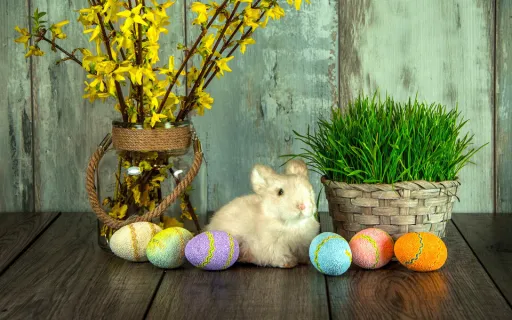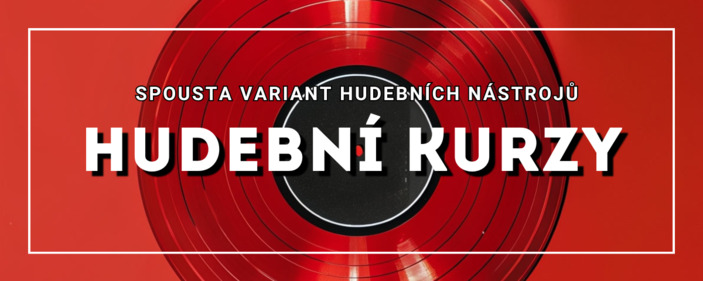Easter is the most important Christian holiday, marking the anniversary of Jesus' resurrection from the dead. The exact origin of the word "Easter" is unclear. Some sources claim it comes from "Eostre", a Germanic goddess of spring and fertility. In Spanish, Easter is called Pascua, and in French, it’s Pâques. These words are derived from the Greek and Latin Pascha or Pasch, which refer to the Jewish Passover. According to the Bible, Jesus Christ rose from the dead during the celebrations of this Jewish holiday, which commemorates the Exodus – the liberation of ancient Israelites from Egyptian slavery under Moses.
Easter Traditions
Easter is a Christian holiday that commemorates the resurrection of Jesus Christ. Celebrated worldwide, each country has its own unique customs and traditions.
In the Czech Republic and Slovakia, a common tradition is "pomlázka" – men and boys playfully whip women and girls with decorated willow rods to bring them health, youth, and good fortune for the year ahead. Other customs include Easter egg painting and caroling.
Throughout Europe, traditions like egg decorating, nativity displays, and religious processions are common. In countries like the UK and Spain, Easter is marked with spring parades and fireworks.
In other parts of the world, traditions vary. In North America, Easter is often celebrated with school trips and spring fairs. In Australia and New Zealand, families typically enjoy barbecues and outdoor activities during Easter.
Every country has its own specific traditions and customs, making Easter a unique and vibrant celebration everywhere.

History of Easter
The history of Easter in the Czech Republic dates back to the Middle Ages, when these holidays were celebrated as a festival of spring and the symbolic end of winter. Christian traditions developed later, with religious processions and services becoming part of Easter celebrations.
In the 16th century, the Czech Kingdom became part of the Habsburg Empire, and the Catholic Church began strongly influencing Easter celebrations. The holiday became the main Christian festival until the 18th century, when Easter celebrations were somewhat restricted.
In the 19th and 20th centuries, Easter traditions in the Czech lands were shaped by political and religious changes. After Czechoslovakia was established, Easter was again recognized as a national holiday, and new customs like "pomlázka" and egg caroling became part of the tradition.
Today, Easter remains an important holiday in the Czech Republic, celebrated with traditional Christian and folk rituals. These holidays symbolize the arrival of spring and new life and are an essential part of Czech culture and heritage.

Preparing for Easter
In the Czech Republic, Easter preparations are filled with traditional rituals and customs. These holidays are associated with spring and renewal, which is reflected in the preparations.
Before Easter, people observe Lent and perform acts of repentance to cleanse both body and soul. Rituals like making "pomlázka" rods and egg dyeing also take place – essential symbols used during Easter celebrations.
During the week leading up to Easter, "Good Friday" is commemorated with church services and processions. On this day, traditional Easter foods like "mazanec" bread and lamb-shaped cakes are prepared.
On Easter Sunday, families attend mass followed by festive gatherings and meals. Traditions like "pomlázka" and egg caroling take place throughout the day, where men and boys visit homes to whip women and girls gently with willow rods, symbolizing cleansing, health, and luck for the year to come.
Egg decorating is another key Easter ritual in the Czech Republic. These colorful eggs are given as gifts, symbolizing new life and prosperity.
Interesting Facts
The 40-day Lent
Easter marks the climax of the Christian liturgical year. It’s preceded by a 40-day Lent period, culminating in Easter Sunday. This period of repentance mirrors the 40 days Jesus spent in the desert resisting temptation. The day before Lent begins is called Fat Tuesday, a final day of feasting and celebration.
Holy Week
The week before Easter is known as Holy Week, starting with Palm Sunday and followed by Blue Monday – the start of school holidays for children. Next comes Gray Tuesday, traditionally a day of spring cleaning. Then comes Ugly Wednesday, named after Judas Iscariot’s betrayal of Jesus. According to tradition, people shouldn’t frown on this day, or risk staying grumpy every Wednesday of the year!
Next are the more widely known days: on Green Thursday, Christians commemorate Jesus' Last Supper. It's a day of forgiveness. On this day, church bells fall silent until Saturday. But it’s far from a silent day – children traditionally walk through villages making rattling noises with wooden clappers, a custom still alive in some regions. Special "Judas" pastries are also baked.
Good Friday marks Jesus' crucifixion – a day of mourning and fasting. Water symbolizes this day, with people washing themselves and even their animals for health. Children also rattled their clappers to "chase Judas" for his betrayal.
Bells ring again on White Saturday, a day between crucifixion and resurrection. Traditionally, people bake "mazanec" bread and lamb cakes, while boys prepare their willow whips and girls decorate Easter eggs.
Easter Sunday, called the Feast of the Resurrection, celebrates Jesus rising from the dead during the "Great Night". Families gather to feast and celebrate the miracle of resurrection.
The week concludes with Easter Monday, also known as Red Monday. Boys roam the streets whipping girls with their willow rods. In return, girls give them painted eggs or sweets. Why? The whipping is said to chase away illnesses and keep girls youthful. Willow branches supposedly hold this magical power. So, ladies – get ready with some pillows this year, as some men do tend to get carried away!

In Conclusion
These days, Easter "pomlázka" often goes hand in hand with alcohol. Adult men go house to house, and women greet them with a shot of something strong. The whipping tour typically happens in the morning. In some villages, any man arriving after noon might get splashed with a bucket of cold water instead!
Easter is also a great time to get creative – whether making Easter cards, decorating your home, planting grass with animal figures, or painting Easter eggs. These spring festivities are perfect for letting your creativity shine.
Beyond the religious and folk traditions, Easter has become a commercial holiday too. Long before Easter itself, shops are stocked with chocolate figures shaped like chicks, hens, lambs, and bunnies, along with jelly candies and Easter pastries.
What Easter traditions do you follow?
If you enjoyed this article about Easter, you might also like:
Easter Holy Week – The Meaning of Easter in Christianity;
Easter Monday in a Small Village;
The Weirdest Easter Traditions Around the World;
Easter Symbols and Gifts.

